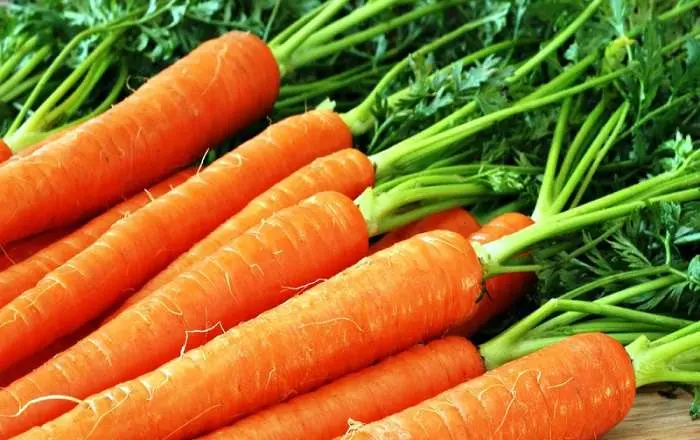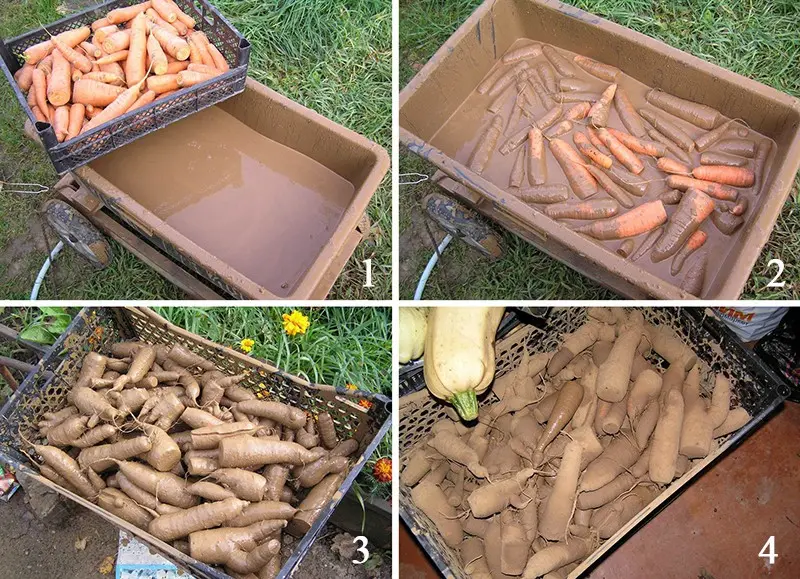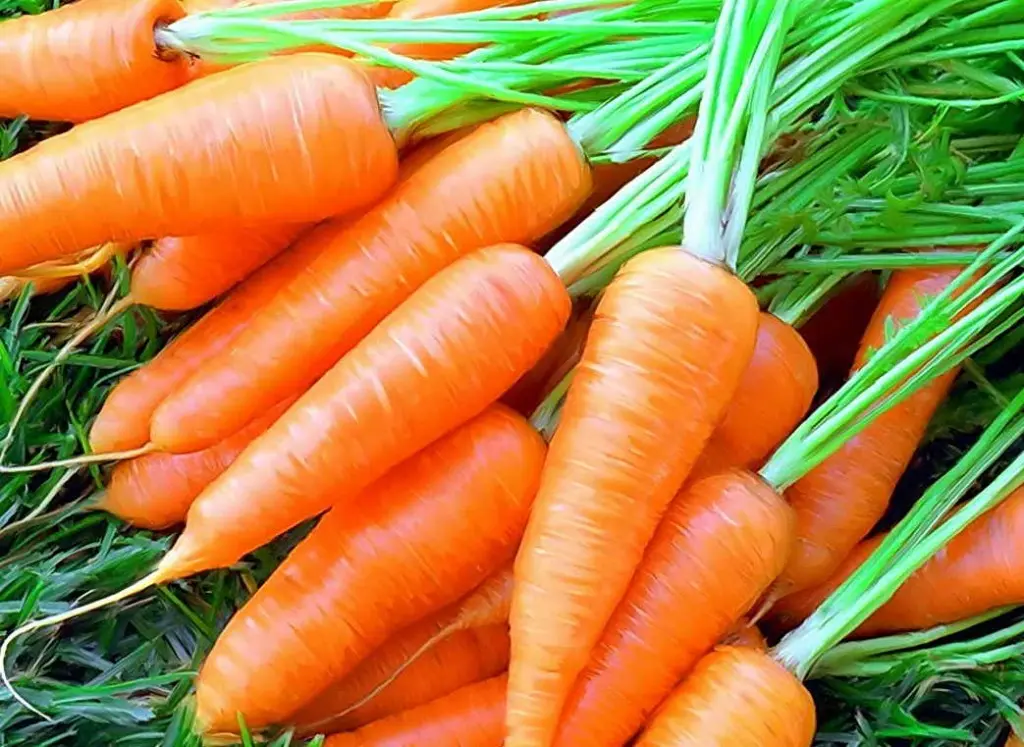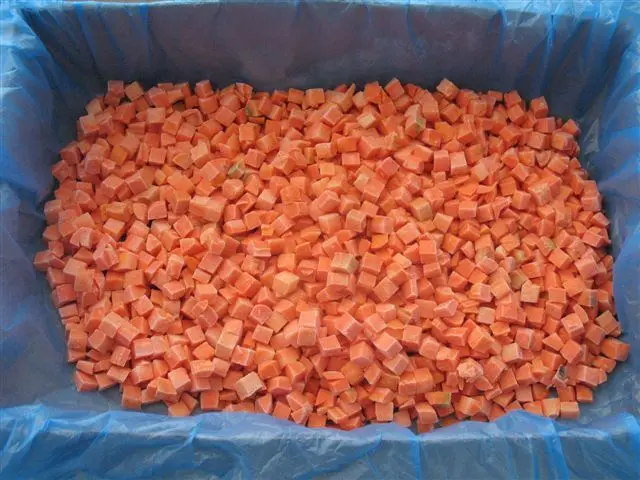Contents
We all love to enjoy fresh vegetables and fruits in the middle of winter. Carrots are among the crops that are suitable for long-term storage. In order to keep the crop in excellent condition, you must adhere to several important rules and know the basic methods of harvesting. Below we will tell you how to store carrots in an apartment, cellar, refrigerator, underground so that they do not deteriorate.
Optimal varieties

Not all varieties of carrots are suitable for long-term storage. Therefore, it is important to think about the purposes of planting even at the stage of choosing seeds. In conditions of middle latitudes, early and mid-ripening varieties are better stored. This is explained by late springs and early autumn frosts. In such conditions, late varieties do not have time to gain the required amount of sugar and fiber. At the same time, early carrots are not dense enough and still deteriorate faster.
Ideally, for storage for the winter, it is better to choose mid-late and medium varieties: Monanta, Nantes 4, Incomparable, Samson, Typhoon, Tsirano, Valeria, Chance, Rosal, Nanteyska and others. Pay attention to the shape of the root crop. Carrots of an oblong conical shape are distinguished by excellent keeping quality. Short root crops (Paris carotele) spoil faster. Also consider density. Rough root crops survive the winter better than tender and juicy ones.
Preparing for storage

In order for the harvest to be well preserved in winter, it is important to properly prepare it. And you need to start with harvesting root crops. How to determine that carrots are ready for harvesting? First of all, read the information about the variety. Seed producers always indicate estimated maturation dates. Also pay attention to the tops. If the lower leaves begin to dry out and turn yellow, then it’s time to harvest.
After harvesting, it is necessary to cut off the tops. The stems left behind will pull some of the moisture from the root crops, and over time they will begin to rot and spoil the carrots. The tops must be cut to the very head of the root crop so that the remnants of greenery do not begin to germinate. After this procedure, the crop is aired under a canopy in the fresh air and left in the sun for 2-3 hours to dry.
Next, the carrots are placed for 7-10 days in a room with a temperature of +10-+14°C. During this period, slices and minor mechanical damage will be delayed in carrots, and elements of diseases will also appear. After 10 days, all carrots will need to be sorted out and rotten and spoiled root crops removed.
Video “How to store at home”
Methods
If you do not know how to store carrots, then below we will present to your attention some of the most common ways. All of them are tested by time and many years of experience of individual gardeners and large producers. Clay, peat, sand, beeswax, onion peel are used for storage. The main goal is to prevent the development of pathogenic bacteria and fungi that lead to rotting of the pulp.
In bulk

The easiest way is to fold the carrot crop into a prepared place in the cellar in small cone-shaped piles. In this form, carrots can easily be sorted out in winter and unhealthy vegetables can be immediately identified. This method is acceptable when it is not planned to store apples nearby and you are sure that pests – rodents, insects, slugs – do not creep into the storage.
For better storage, heaps can be sprayed with onion or coniferous solution. To prepare the infusion, take 100 grams of onion peel or needles per 1 liter of water. Also bulk can be sprinkled with powdered chalk.
In sand
Storing carrots in the sand is very popular. This natural material helps maintain a stable temperature and humidity around the carrot. It is recommended to use loamy, pre-moistened sand. For 1 bucket of dry sand you will need 1 liter of water.
For packing carrots, you can use wooden or corrugated boxes. The first layer is made of sand 3-5 centimeters thick. Next, the root crops are laid in one layer, so that they do not touch each other. Now again fill in the sand and so shift all the available carrots. Finished boxes are installed in basements or excavated cellars.
In the boxes

Storing carrots in boxes is convenient for home use. Prepared root crops are laid out in wooden or paper boxes, sprinkled with sawdust or onion peel. These additional materials will help the vegetables have less contact with each other, and also protect them from attack by harmful microorganisms. Boxes can be placed on covered, but not heated balconies, where an acceptable temperature is established.
In plastic bags
Purchase a sufficient number of plastic bags with a volume of 5 to 30 kilograms. Carrots are placed in them and set in cool and damp cellars. Humidity should be at least 95-98%. Bags must be left open so that carbon dioxide does not accumulate inside, which is emitted by root crops. If after a while you start noticing condensation buildup on the inside of the bag, sprinkle powdered lime all around. It will remove excess moisture.
In peat

Storing carrots in peat is not as common as other methods, but this method cannot be considered less effective. This material helps to keep the juiciness and elasticity of carrots. You will need to get a riding friable slightly decomposed peat. Its humidity must be brought to 40-50%. Prepare crates or cartons for stacking. The first layer is made from peat. Then you need to lay out the roots. They should not touch each other, just as in the case of sand. Sprinkling ends again with a layer of peat. Finished boxes are transferred to the basement.
Storage Rules
Regardless of how you store your carrots, there are a few general guidelines. The roots of this crop love moisture.
Humidity in the cellar should be at least 90-95%. The temperature is normally kept at +3-+5°С, but not higher than +10°С. In a room that is too warm, carrots will quickly release moisture and germinate.
Make sure that the temperature in the basement or pantry is stable without sudden fluctuations. For best results, be sure to sanitize your vault. To do this, walls, containers and floors are treated with copper sulphate or lime. Periodically, it is necessary to revise the crop, especially if the vegetables are in contact with each other. One rotten root crop can cause damage to the entire crop.
If you want to know how to store carrots in the refrigerator, then here are some helpful tips. Use plastic bags to pack carrots. They retain moisture well and do not allow root crops to dry out. Carrots cannot be stored without packaging. The circulating air of the refrigerator will quickly dry it out. To improve the quality of storage, lay out several root crops in bags. Thus, you will get a masonry of several packages, 5-7 carrots in each.
Video “Storage after harvest”
From the video you will learn how to save carrots at the growing stage and after – at the storage stage. Various methods and methods are given.









